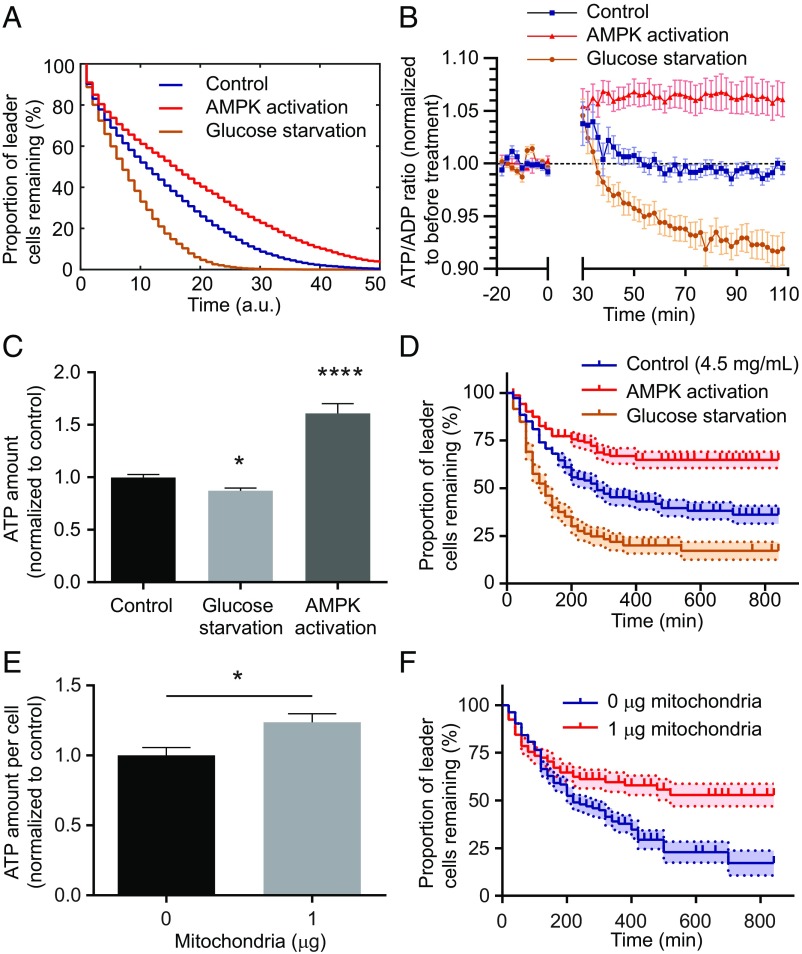Fig. 5.
Leader cell lifetime can be modulated by increasing or decreasing cellular energy level. (A) Model predicts that a drop in intracellular energy level by glucose starvation decreases leader cell lifetime and that an elevated energy level due to AMPK activation increases leader cell lifetime. a.u., arbitrary unit. (B) Glucose deprivation decreases the cellular ATP/ADP ratio over time for MDA-MB-231 cells on a glass substrate, whereas AMPK activation by 200-µM 5-aminoimidazole-4-carboxamide riboside (AICAR) increases the ATP/ADP ratio (n > 15 cells for each condition, treatment added at t = 0 min). (C) Glucose starvation decreases total ATP concentration, whereas AMPK activation increases total ATP concentration 20 h after treatment (n = 24, 14, and 16, respectively; P = 0.0052, and <0.0001 from unpaired t tests compared with the control). (D) Experiments verify that leader cell lifetime in spheroids is decreased (P < 0.0001 from the logarithmic-rank test) in glucose-free medium and increased (P < 0.0001 from logarithmic-rank test) when treated with 200-µM AICAR to activate AMPK (n > 100 for each condition; shades represent s.e.). (E) Artificially transferred mitochondria (1 µg/100,000 recipient cells) increases cellular ATP concentration compared with the control (0 µg) 4 d after transfer (n = 5 for each group; P = 0.023 from unpaired t test). (F) Leader cells with artificially transferred mitochondria have increased lifetime compared with control ones within coculture spheroids in 4.5-mg/mL collagen (n > 100 for each condition; P = 0.0051 from the logarithmic-rank test). *P < 0.05 and ****P < 0.0001.

